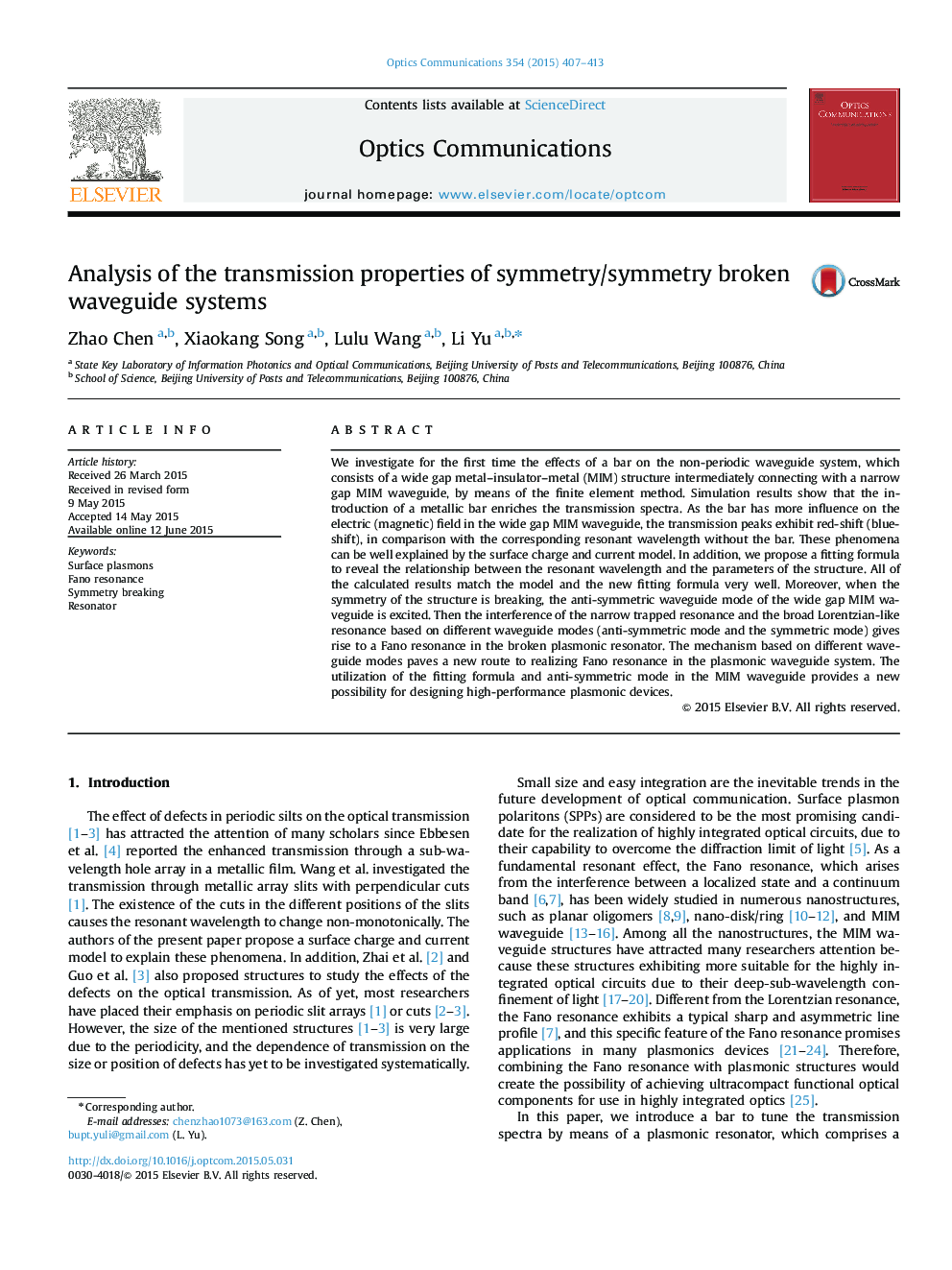| Article ID | Journal | Published Year | Pages | File Type |
|---|---|---|---|---|
| 1533767 | Optics Communications | 2015 | 7 Pages |
We investigate for the first time the effects of a bar on the non-periodic waveguide system, which consists of a wide gap metal–insulator–metal (MIM) structure intermediately connecting with a narrow gap MIM waveguide, by means of the finite element method. Simulation results show that the introduction of a metallic bar enriches the transmission spectra. As the bar has more influence on the electric (magnetic) field in the wide gap MIM waveguide, the transmission peaks exhibit red-shift (blue-shift), in comparison with the corresponding resonant wavelength without the bar. These phenomena can be well explained by the surface charge and current model. In addition, we propose a fitting formula to reveal the relationship between the resonant wavelength and the parameters of the structure. All of the calculated results match the model and the new fitting formula very well. Moreover, when the symmetry of the structure is breaking, the anti-symmetric waveguide mode of the wide gap MIM waveguide is excited. Then the interference of the narrow trapped resonance and the broad Lorentzian-like resonance based on different waveguide modes (anti-symmetric mode and the symmetric mode) gives rise to a Fano resonance in the broken plasmonic resonator. The mechanism based on different waveguide modes paves a new route to realizing Fano resonance in the plasmonic waveguide system. The utilization of the fitting formula and anti-symmetric mode in the MIM waveguide provides a new possibility for designing high-performance plasmonic devices.
